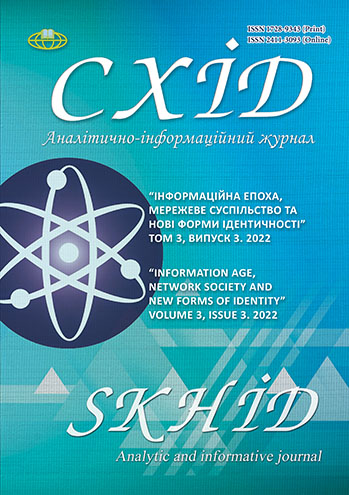Social transformations and distribution of pirated media content on the example of video games
DOI:
https://doi.org/10.21847/1728-9343.2022.3(3).266199Keywords:
video games, pirated content, transformative societies, motives for the spread of piracy, information ageAbstract
The article examines the history of the distribution of pirated content and methods of combating it using the example of video games. The ambivalent impact of the phenomenon of piracy on sociocultural processes in societies, especially those that radically changed their social structure at the end of the 20th – beginning of the 21st century, is demonstrated. The author proceeds from the fact that piracy arose on the basis of the absence of the so-called “copyright culture” transformed societies, allowed individual economic actors to get rich illegally and quickly, but at the same time acted as a massive display of technical intelligence, a creative impulse to create one’s own video content in these societies and the formation of relevant regional markets, and also contributed to the development of many technical talents currently working on digitalization of socio-economic processes around the world.
According to the examples of piracy described in the article, four main motives for its spread are highlighted, namely: economic, activist, archival and creative motives. As demonstrated in the study, these motives shape relevant social patterns and change over time, as can be seen in the example of creative piracy, which was widespread in the pre-Internet era and has almost disappeared in the modern one. Although in most cases of piracy the main motive is economic, which leads to great losses for copyright holders and authors, not all methods are unequivocally harmful. For example, activist piracy is a form of social protest and allows to demonstrate one’s dissatisfaction with the policy of rights holders through the practice of “wrong” consumption; the archival motive often works in the “gray zone” of copyright and allows preservation of those products, the rights to which were handed over to the rights holders that actually no longer exist.
Downloads
References
Aiken, M. et al. (2015). A consideration of the social impact of cybercrime: examples from hacking, piracy, and child abuse material online. Contemporary Social Science. 11 (4): 373–391. https://doi.org/10.1080/21582041.2015.1117648.
Craddock, R. (2021). Nintendo Issues Mass DMCA Takedown, 379 Fan-Made Games Forcibly Removed. Nintendo Life. https://clck.ru/32Xjri.
De Kosnik, A. (2019). Piracy Is the Future of Culture. Third Text. 34 (1): 62–70. URL: https://doi.org/10.1080/09528822.2019.1663687.
Depoorter B. What happened to video game piracy?. Communications of the ACM. 2014. Vol. 57, no. 5. P. 33–34. URL: https://doi.org/10.1145/2594289 (date of access: 12.10.2022).
Distribution of Steam users worldwide by country. StatInvestor - The Full Statistics Catalog. URL: https://statinvestor.com/data/27092/steam-users-by-country-rate/ (date of access: 12.10.2022).
Doctorow, C. ((2011). Why poor countries lead the world in piracy. the Guardian. https://www.theguardian.com/technology/2011/may/03/why-poor-countries-lead-world-piracy.
Fukugawa, N. (2011). How Serious is Piracy in Videogame Industry. The Empirical Economics Letters. 10 (3): 225–233.
Gaming Market Size, Share | 2022 - 27 | Industry Growth. Home | Mordor Intelligence. URL: https://www.mordorintelligence.com/industry-reports/global-gaming-market (date of access: 12.10.2022).
Good, O. S. (2015). Metal Gear Solid wasn't sued over Escape From New York ties because Kojima's 'a nice guy'. Polygon. https://www.polygon.com/2015/10/28/9625556/metal-gear-solid-escape-from-new-york-lawsuit-kojima-john-carpenter.
Lysaichuk, A. (2022, February, 11). Piratstvo – plokho, a еkonomyt na ihrakh luchshe, chem vorovat. Ili net? ITC.ua. https://itc.ua/articles/piratstvo-ploho-a-ekonomit-na-igrah-luchshe-chem-vorovat-ili-net/.
Maliuk, Ye. O. (2016). Videoihry v Ukraini: geneza ta istorychna evoliutsiia u 80–90-kh rokakh XX stolittia. Pytannia kulturolohii. 32: 111–127. https://doi.org/10.31866/2410-1311.32.2016.155722.
Office of the United States Trade Representative. 2013 Special 301 Report. 2013. URL: https://ustr.gov/sites/default/files/05012013%202013%20Special%20301%20Report.pdf (date of access: 12.10.2022).
Office of the United States Trade Representative. 2021 Special 301 Report. 2021. URL: https://ustr.gov/sites/default/files/files/reports/2021/2021%20Special%20301%20Report%20(final).pdf.
Reunanen, M., Wasiak, P., Botz, D. (2015). Crack Intros: Piracy, Creativity, and Communication. International Journal of Communication. 9: 798–817.
Todd, D. (2011). Pirate nation: How digital piracy is transforming business, society and culture. Philadelphia : Kogan Page.
Tsotsorin, M. V. (2012). Piracy and Video Games: Is There a Light at the End of the Tunnel?. SSRN Electronic Journal. https://doi.org/10.2139/ssrn.2334057.
Viewers who watch pirated content weekly in selected countries 2017. Statista. https://www.statista.com/statistics/684365/pirate-content-viewers-weekly-by-country/.
World Internet Users Statistics and 2022 World Population Stats. Internet World Stats - Usage and Population Statistics. URL: https://www.internetworldstats.com/stats.htm.
Yar, M. (2005). The global ‘epidemic’ of movie ‘piracy’: crime-wave or social construction? Media, Culture & Society. 27 (5): 677–6*96. https://doi.org/10.1177/0163443705055723
Downloads
Published
How to Cite
Issue
Section
License
Copyright (c) 2022 Євген Малюк

This work is licensed under a Creative Commons Attribution-NonCommercial-NoDerivatives 4.0 International License.
1. Authors bear responsibility for the accuracy of facts, quotations, numbers and names used.
2. Manuscripts are not sent back.
3. The publisher does not always agree with the authors' opinion.
4. The authors reserve the right to authorship of the work and pass the first publication right of this work to the journal under the terms of a Creative Commons Attribution-NonCommercial-NoDerivatives 4.0 International License. This license allows others to distribute (copy) the published work for non-commercial purposes, provided there is mandatory attribution to its authors and a link to the first publication in our journal.
5. The authors have the right to conclude separate supplement agreements that relate to non-exclusive work distribution in the form in which it has been published by the journal (for example, to upload the work to the online storage of the journal or publish it as part of a monograph), provided that the reference to the first publication of the work in this journal is included.

